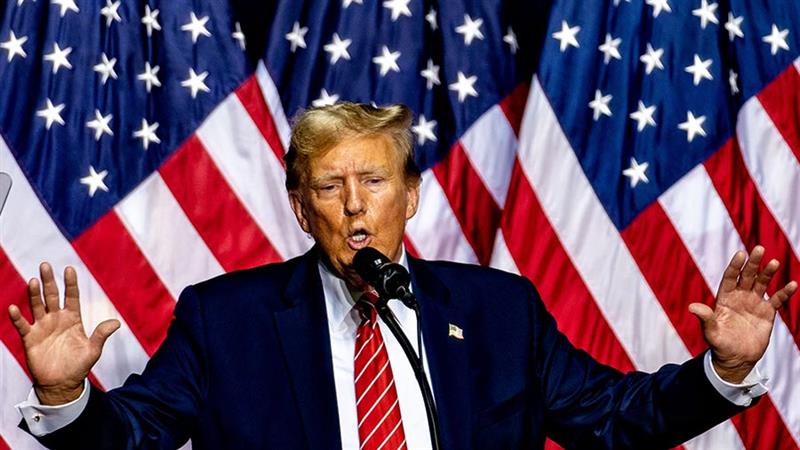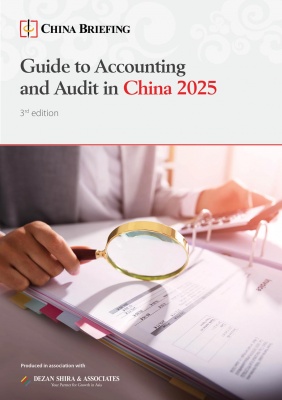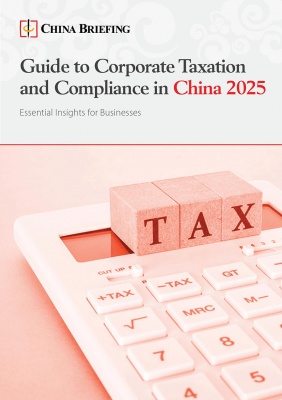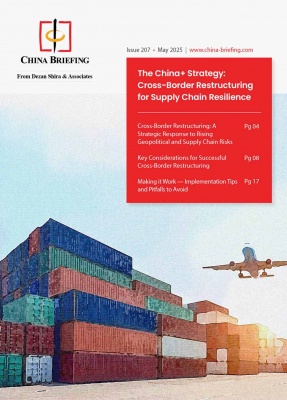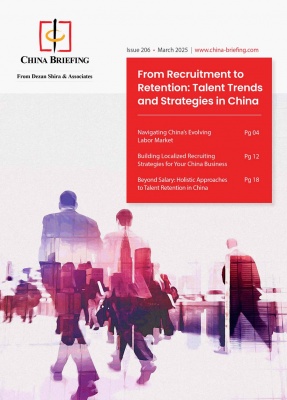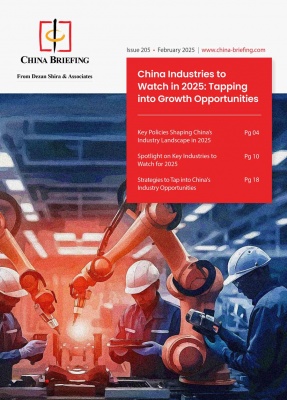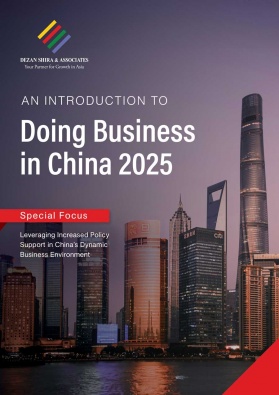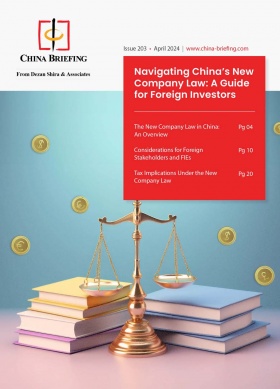China-Australia Economic Ties: Trade, Investment, and Latest Updates
China and Australia have an evolving relationship marked by robust economic ties and strategic cooperation, with recent years seeing a thaw in political tensions and a resurgence in trade and investment. Despite challenges, both nations are focusing on strengthening their partnership through high-level dialogues and renewed economic engagements. We track the key developments of the bilateral relations between the two countries in this article.
China and Australia share a vital and dynamic relationship, anchored by robust economic ties and strategic interests. As one of China’s key trading partners, Australia supplies essential resources that drive China’s economic growth, while China’s vast market offers significant opportunities for Australian businesses. Recent diplomatic efforts in 2023 and 2024 have reinforced a renewed commitment to strengthening this partnership, reflecting both nations’ recognition of the importance of their relationship.
Beyond economic exchanges, the diplomatic ties between China and Australia are crucial for regional stability. Both countries understand the need for a cooperative relationship that benefits not only their economies but also the broader Asia-Pacific region. Recent high-level meetings have paved the way for enhanced collaboration in trade, clean energy, and climate change, showcasing the critical role of diplomacy in addressing challenges and fostering mutual growth.
In this article, we track key developments that have shaped the China-Australia relationship, with a particular focus on the economic aspects.
Latest developments
As 2024 progresses, the relationship between China and Australia continues to evolve within a framework of cautious optimism. While strategic differences persist, both nations have shown a willingness to engage constructively and rebuild their economic partnership.
The economic interdependence between the two countries remains strong, and shared interests in areas such as e-commerce, sustainability, and climate change offer further avenues for cooperation.
In this section, we present a timeline of China-Australia relations, reflecting the complexities and opportunities presented by this new chapter in bilateral ties.
July 8, 2025 – Australian Prime Minister Anthony Albanese will visit China from July 12 to 18, 2025
Australian Prime Minister Anthony Albanese will visit China from July 12 to 18, 2025, at the invitation of Premier Li Qiang. The trip marks a key moment in the second decade of the Australia-China comprehensive strategic partnership and follows recent progress in mending bilateral relations. During the visit, Albanese will meet with President Xi Jinping and other top leaders and attend the Australia-China CEO Roundtable in Beijing.
For foreign investors in China, the visit signals a positive shift in the bilateral business environment. Discussions are expected to cover trade normalization, tourism recovery, and cooperation in emerging sectors such as clean energy, education, and digital services. Businesses may benefit from improved market access, regulatory clarity, and a more stable policy outlook, especially in sectors previously affected by tariffs and import restrictions.
The CEO Roundtable will also provide a high-level platform for companies to explore cross-border investment and supply chain opportunities. While the visit may not resolve all strategic differences, it offers renewed momentum for practical engagement between the two economies.
Foreign firms already operating in China—or looking to expand through Australian partnerships—should monitor outcomes closely for potential commercial openings and policy signals.
December 20, 2024 -Full resumption of Australian live rock lobster exports to China
According to a media release published on the official website of the Australian Minister of Foreign Affairs on December 20, “China has notified today Australia that full resumption of live rock lobster trade can recommence, effective immediately.” This development marks a significant step in the ongoing recovery of the economic relationship between the two countries, following a series of trade disruptions in recent years.
This announcement comes just two weeks after the resumption of Australian red meat exports to China on December 4, 2024, signaling a broader thaw in bilateral trade relations. The restoration of both live rock lobster and red meat exports follows a timetable set by Australian Prime Minister Anthony Albanese and Chinese Premier Li Qiang on October 10, 2024. During a meeting at the ASEAN Summit in Vientiane, Laos, the two leaders agreed to restore the full live rock lobster trade by the end of 2024. The timing of the resumption will allow Chinese consumers to enjoy Australian lobster just in time for the Lunar New Year celebrations, a development that Australian Trade and Tourism Minister Don Farrell described as an “excellent result” for both the Australian lobster industry and Chinese consumers.
The resumption of lobster exports is not only an economic boon but also an important step in stabilizing the broader relationship between China and Australia. China is Australia’s largest trading partner, and the resumption of trade in high-value products like lobster helps to reinforce the importance of a constructive economic relationship for both countries.
December 4, 2024 -Full resumption of Australian red meat exports to China
Australia’s red meat exports to China have fully resumed following the of lifting bans on the final two Australian meat processing companies. This marks the conclusion of trade restrictions placed on 10 Australian meat exporters between 2020 and 2022. Australian Prime Minister Anthony Albanese announced the breakthrough, emphasizing its significance for normalizing trade relations and boosting the red meat sector. Beef and veal export revenues are projected to exceed US$2.2 billion for 2023–2024, with China remaining Australia’s second-largest market after the United States.
The Albanese administration has significantly improved trade relations since taking office in May 2022. According to Trade and Tourism Minister Don Farrell, nearly all trade barriers have been resolved, restoring critical export industries and paving the way for job creation. The resolution of barriers, which had previously cost Australia approximately A$20 billion in lost exports, signals a continued thaw in relations.
Key milestones include:
- The resumption of coal, timber, barley, beef, and hay exports to China.
- The revival of Australian wine exports after anti-dumping and countervailing duties were lifted in March 2024, with trade surging to A$86 million.
- The full resumption of live rock lobster exports, expected to generate A$700 million and safeguard 3,000 jobs by the end of 2024.
October 10, 2024-Australian Rock Lobster Live Export Trade to China Set to Resume Soon
On October 10, 2024, Australian Prime Minister Anthony Albanese announced that the Australian government has agreed on a timetable with China for the full resumption of Australian live rock lobster exports by the end of 2024.
The agreement was reached during a meeting between Prime Minister Albanese and China’s Premier Li Qiang on the sidelines of the ASEAN Summit in Vientiane, Laos.
Since 2020, Australian rock lobsters have been effectively prevented from entering China’s market, which was worth over AUD 700 million in 2019. This outcome is another step towards stabilizing the bilateral relationship between China and Australia. “It is in the interests of both our countries to continue this path of stabilizing our relationship. A resumption in trade for all Australian commodities is an important part of this process,” said Albanese.
September 29, 2024-China and Australia have resumed their strategic economic dialogue after a seven-year hiatus
On September 26, Zheng Shanjie, chairman of China’s National Development and Reform Commission (NDRC), met with Australian Treasurer Jim Chalmers in Beijing for the fourth China-Australia Strategic Economic Dialogue (SED). The last SED occurred in 2017 before political and economic disagreements disrupted relations between the two countries. Both parties signed a Memorandum of Understanding (MOU) during the meeting to deepen dialogue and share knowledge on fiscal policy, the regional macroeconomic environment, and policy frameworks. In a post-meeting press conference, Chalmers mentioned that he and Zheng had discussed trade, investment, and cooperation on green goals. He also expressed support for China’s newly announced stimulus package.
June 17, 2024 – China to include Australia in the list of unilateral visa-free countries
Chinese Premier Li Qiang said that China will include Australia in the list of unilateral visa-free countries. Li made the remarks during a joint press meeting with Australian Prime Minister Anthony Albanese.
Additionally, both countries have demonstrated their commitment to people-to-people exchanges. They will provide reciprocal access to multi-entry visas, with a duration of up to three to five years, for business, tourism, and visiting family members.
June 12, 2024 – Chinese Premier Li Qiang to visit Australia, New Zealand and Malaysia
Chinese Premier Li Qiang is scheduled to visit Australia, New Zealand, and Malaysia from June 13 to 20. During his visit to Australia, he will participate in high-level meetings, including the ninth China-Australia Annual Leaders’ Meeting and a China-Australia CEO Roundtable Meeting. These discussions aim to deepen economic cooperation and mutual understanding, with a focus on trade, clean energy, and climate change.
In New Zealand, Li is set to meet with Governor-General Dame Cindy Kiro and Prime Minister Christopher Luxon. The visit aims to strengthen bilateral ties and explore new cooperation opportunities. Discussions will cover international and regional issues of mutual interest, emphasizing communication and mutual trust to promote the steady growth of China-New Zealand relations.
May 30, 2024 – Five Australian beef processing plants regain access to China exports
In a significant development, five Australian beef processing plants that had been suspended from exporting to China have had their access restored. China’s General Administration of Customs (GACC) informed the businesses that they could resume trade, with some plants authorized to export both chilled and frozen products and others restricted to frozen only.
The five reinstated facilities are:
- JBS Dinmore, Queensland (Est. No 235 – Chilled & Frozen)
- Northern Cooperative Meat Co, Casino, New South Wales (Est. No 239 – Chilled & Frozen)
- Kilcoy Global Foods, Kilcoy, Queensland (Est. No 640 – Chilled & Frozen)
- JBS Beef City, Toowoomba, Queensland (Est. No 170 – Frozen only)
- Meramist, Caboolture, Queensland (Est. No 416 – Frozen only)
Despite this progress, two plants remain suspended due to minor regulatory or documentation issues identified years ago. John Dee, Warwick, Queensland (Est No 243) has been suspended since August 2020, and Australian Country Choice, Brisbane, Queensland (Est No 1620) since October 2021. Nevertheless, collectively, the five re-admitted plants have a daily processing capacity of around 6,000 heads, marking a substantial boost for the Australian beef industry.
March 29, 2024 – China announces removal of tariffs on Australian wine
China’s Ministry of Commerce has announced the immediate removal of the anti-dumping and anti-subsidy tariffs on imported Australian wine, effective March 29, 2024. Initially implemented in March 2021, these tariffs, ranging up to 218.4 percent, were part of a broader spectrum of trade barriers were among several trade barriers enacted amid heightened tensions between Australia and China in the wake of the COVID-19 pandemic.
The decision to rescind these tariffs marks a significant shift in the dynamics of China-Australia trade relations. Over the past year, there has been a noticeable thaw in the diplomatic atmosphere, resulting in the gradual dismantling of trade barriers across various Australian exports.
This further move towards normalization reflects a willingness from both sides to engage in dialogue and cooperation across various economic sectors.
China-Australia bilateral relations
Close diplomatic and economic relationship since 1972
Since establishing diplomatic relations in 1972, Australia and China have cultivated a multifaceted partnership grounded in mutual respect and shared interests. This relationship has been marked by numerous high-level visits and extensive dialogue, reflecting its significance and complexity.
The bilateral relationship is supported by a robust framework of dialogues and agreements. A pivotal moment came in 2009 with the signing of a joint statement during Chinese former Vice Premier Li Keqiang’s visit to Australia, which reaffirmed both countries’ commitment to enhancing cooperation in areas such as trade, regional stability, and economic development. This agreement marked a significant step in solidifying the partnership and expanding its scope.
Indeed, trade remained a cornerstone of the Australia-China relationship over the years. The Trade and Economic Framework (TEF), established in 2003, has been instrumental in guiding the development of trade ties. Following that, the signing of the China-Australia Free Trade Agreement in 2015, unlocked new opportunities for both nations, significantly reducing tariffs on goods, enhancing market access, and promoting investment flows.
Both countries have made climate change a priority in their bilateral cooperation, starting with joint dialogues in 2008. This collaboration reached a milestone with the signing of a Memorandum of Understanding (MoU) in 2024, underscoring their mutual commitment to addressing environmental challenges.
Extending beyond trade and diplomacy, the relationship between China and Australia is deeply enriched by people-to-people connections, including educational exchanges, tourism, and cultural programs. The large Chinese student population in Australia and the robust tourism sector are key indicators of the strong social ties that bind the two nations. These connections foster mutual understanding and strengthen the overall relationship between the countries.
Political tensions and impact on trade
Despite the scope of market opportunities, bilateral relations between China and Australia have not always been smooth. Tensions have cropped up on a range of issues related to technology, politics, and trade.
In recent years, Australia has taken steps to address national security concerns by restricting certain foreign telecommunications equipment. Additionally, Australia has participated in various international initiatives aimed at balancing regional influence, such as the including the Quadrilateral Security Dialogue, the Indo-Pacific Economic Framework, Partners in the Blue Pacific, and the AUKUS alliance. Moreover, the relationship between China and Australia experienced a sharp downturn during the early 2020s, when tensions arose over the origins of COVID-19. This period saw trade restrictions and disputes, impacting a range of Australian goods – including coal, barley, wine, beef, and seafood, and leading to formal complaints to international trade bodies.
Such incidents have had a severe impact on trade. At the time, the Australian government estimated that the tariffs could cost its economy about AU$20 billion (US$13 billion) a year, with wine, barley, lobsters, beef, and coal among the most-hit products. Similarly, Chinese businesses faced tightened scrutiny, especially on deals involving critical infrastructure.
From diplomatic freeze to renewed engagement (2022-2023)
The relationship between China and Australia has seen significant shifts since late 2022, transitioning from a prolonged diplomatic freeze to a gradual mending of ties. This evolution has been marked by key meetings, strategic dialogues, and positive developments in trade, illustrating a complex yet improving bilateral relationship.
A major breakthrough occurred on November 15, 2022, when Chinese President Xi Jinping and Australian Prime Minister Anthony Albanese met during the G20 Summit in Indonesia. This meeting was the first formal engagement between the two leaders since 2016, following years of strained relations. Their discussions acknowledged the complementary nature of their economies and were seen as a positive step toward thawing bilateral ties.
By March 2023, China had lifted its restrictions on Australian coal, allowing all domestic companies in China to import coal from Australia, effectively ending the trade limitations that had been in place since late 2020.
In May 2023, Chinese imports of Australian timber resumed, further indicating an easing of trade restrictions. This resumption was particularly important, given the timber trade’s annual value of approximately AU$600 million (US$395 million).
In August 2023, China lifted the 80 percent tariff on Australian barley, a significant step in resolving the trade dispute that had severely impacted Australia’s barley exports since 2020. This move led Australia to withdraw its appeal to the WTO, signaling a potential normalization of trade relations in the barley sector.
Another notable turning point came in September 2023, with the resumption of high-level government talks between Australia and China after a three-year hiatus. The 7th edition of the Australia-China High-Level Dialogue, held in Beijing on September 7, 2023, facilitated crucial discussions on trade, investment, and regional security. Co-chaired by former Chinese Foreign Minister Li Zhaoxing and former Australian Trade Minister Craig Emerson, the dialogue underscored a renewed commitment to enhancing bilateral engagement. This event was particularly significant as it marked a shift towards stabilizing relations, with China beginning to ease restrictions on Australian goods.
Then from November 4 to 7, 2023, PM Albanese made an official visit to China, where he met with President Xi Jinping. This visit was a critical step in stabilizing the relationship and marked a significant breakthrough, particularly in resolving disputes related to wine and wind towers.
Albanese’s participation in the sixth China International Import Expo (CIIE), accompanied by Trade Minister Don Farrell and a delegation of over 250 Australian firms, underscored Australia’s commitment to strengthening trade ties. The ‘Taste Queensland’ Pavilion at the CIIE, showcasing products from 25 Queensland companies, highlighted the diverse and robust nature of Australian trade.
The discussions between Xi and Albanese focused on the benefits of their longstanding diplomatic relationship and efforts to foster mutual understanding, marking a positive trajectory in bilateral relations and laying the groundwork for enhanced cooperation and strategic alignment in 2024 and beyond.
China-Australia bilateral trade
Australia and China have enjoyed a robust trade relationship for over 15 years, with China consistently ranking as Australia’s largest trading partner, and accounting for 27 percent of Australia’s total trade in goods and services in 2023.
The bilateral trade volume between Australia and China increased by 9.2 percent in 2023, reaching AU$326.9 billion (US$215.78 billion). Of this, Australia’s exports of goods and services to China totaled AU$218.8 billion (US$144.43 billion), reflecting an 18.2 percent growth compared to 2022. Service trade saw a substantial increase of 53.4 percent, with education and tourism being the primary growth drivers.
Indeed, China is a vital source of tourism for Australia. In 2023, Australia welcomed over 550,000 Chinese tourists, including a notable influx of 66,000 in December alone. This strong tourist flow reflects Australia’s growing appeal as a travel destination.
Australia has also become China’s 7th largest trading partner, illustrating the mutual significance of their economic interactions.
In 2023, Australia’s exports to China reached US$120.22 billion, according to the United Nations COMTRADE database on international trade. The top five export categories were iron ore and concentrates (US$55.3 billion), coal (US$30.5 billion), natural gas (US$13.2 billion), gold (US$7.1 billion), and copper ores and concentrates (US$4.3 billion).
| Australia’s Top 5 Exports to China in 2023 | |
| Items | Value (US$, Billion) |
| Ores slag and ash | 79.38 |
| Salt, sulphur, earth, stone, plaster, lime and cement | 12.54 |
| Mineral fuels, oils, distillation products | 7.60 |
| Pearls, precious stones, metals, coins | 4.29 |
| Cereals | 3.71 |
| Source: United Nations COMTRADE, 2024 | |
Over the same period, China’s exports to Australia reached US$73.81 billion, with the top five export categories being electrical and electronic equipment (US$12.17 billion), machinery including nuclear reactors and boilers (US$10.82 billion), vehicles other than railway or tramway (US$6.12 billion), furniture and lighting signs, including prefabricated buildings (US$4.52 billion), and plastics (US$4.05 billion).
| China’s Top 5 Exports to Australia in 2023 | |
| Items | Value (US$, Billion) |
| Electrical, electronic equipment | 12.17 |
| Machinery, nuclear reactors, boilers | 10.82 |
| Vehicles other than railway, tramway | 6.12 |
| Furniture, lighting signs, prefabricated buildings | 4.52 |
| Plastics | 4.05 |
| Source: United Nations COMTRADE, 2024 | |
The economic structures of China and Australia present numerous opportunities for further investment and collaboration. Australia, as a leading exporter of iron ore, complements China’s position as the largest consumer of steel, with nearly 60 percent of iron ore imports coming from Australia. This synergy in the mining and resources sector presents ongoing opportunities for investment and cooperation.
In recent developments, Australian beef exporters have resumed exports to China after meeting import inspection requirements. This marks a positive turn for the Australian beef industry, reflecting the potential for growth in other sectors as well. The expansion of Australian wine exports and the resumption of beef trade highlight the benefits of a cooperative trade environment and suggest promising avenues for future investment.
China-Australia bilateral investment
The investment relationship between Australia and China has experienced significant growth, with the total stock of two-way investment reaching a peak of US$166.8 billion in 2021.
China remains a prominent investor in Australia despite a slight decline in its foreign direct investment (FDI). In 2023, China’s FDI in Australia decreased by 2.5 percent, reducing its share of total foreign investment from 2.2 percent to 1.9 percent. Although this represents a minor decrease, China continues to hold a significant position, ranking fifth among top investors in Australia, behind the US, UK, Japan, and the Netherlands.
Conversely, Australian investment in China totaled US$74.8 billion in 2024, positioning China as Australia’s 12th largest investment destination.
Chinese investment in Australia
China’s investment in Australia has been substantial and growing. As of the end of 2023, China’s total investment in Australia reached US$58.5 billion, with direct investments (FDI) constituting US$30.9 billion.
Chinese investment in Australia has been concentrated in several key sectors, reflecting both strategic interests and economic opportunities. The mining and energy sector has attracted the largest share of investment, totaling AU$70.83 billion (US$46,62 billion) between 2006 and 2023, or 51 percent of all Chinese investment in Australia. This significant focus, particularly during the resources boom, highlights China’s need to secure access to natural resources, such as coal, gas, and iron ore. Major transactions, like Chinalco’s stake in Rio Tinto, underscore the importance of Australia’s resource wealth to China.
The commercial real estate sector has also seen substantial Chinese investment, accounting for 20 percent of the total, or AU$27.98 billion (US$18.41 billion). Investment in this sector peaked around 2015, with Chinese firms acquiring office towers, hotels, and residential developments, reflecting an interest in stable, long-term assets.
Infrastructure investment, amounting to AU$11.25 billion (US$7.4 billion, or 8 percent of the total), has included strategic acquisitions in ports, railways, and utilities, such as the leasing of the Port of Melbourne. Although large-scale investments have slowed since 2018, infrastructure remains a critical area for Chinese capital.
Other important sectors include healthcare, renewable energy, and food and agribusiness. Healthcare has drawn AU$9.06 billion (US$5.96 billion) in investment, focusing on services and health products. Renewable energy investments total AU$6.66 billion (US$4.38 billion), mainly in wind farms, aligning with China’s broader push for sustainable energy. The food and agribusiness sector, with AU$4.99 billion (US$3.28)invested, has seen Chinese interest in Australia’s agricultural output, driven by the need to meet domestic demand for quality food products.
Australian investment in China
Australian investment in China has shown a dynamic trend over recent years. Despite some fluctuations, the overall trajectory has been one of growth, driven by the complementary nature of the two economies. However, there have been periods of decline, such as a significant drop in FDI in 2021, dropping from the peak of US$ 428.6 in 2019 to US$299.5. Though the number rebounded in 2022 and 2023, this trend underscores the complex and evolving nature of the Australia-China economic relationship, influenced by both opportunities and challenges in the global economic landscape.
Key sectors attracting Australian investment include banking, wealth management, and professional services, reflecting China’s growing and increasingly sophisticated market.
Trade and investment agreements
China-Australia Free Trade Agreement (ChAFTA)
The China-Australia Free Trade Agreement (ChAFTA), effective from December 20, 2015, has significantly enhanced trade and investment opportunities between the two nations.
Key highlights include the elimination of tariffs on nearly all Australian goods exports to China, particularly benefiting agricultural products like beef, dairy, and wine, and major resources such as iron ore and coal. The agreement also opens up new avenues for Australian service providers in sectors including finance, education, and telecommunications, offering unprecedented access to the Chinese market.
Additionally, ChAFTA promotes increased Chinese investment in Australia by liberalizing screening thresholds and includes robust protections for investors through an Investor-State Dispute Settlement (ISDS) mechanism. Other notable provisions include improved business mobility and a Work and Holiday Arrangement that supports tourism and economic growth in rural areas.
China-Australia Double Tax Treaty (DTA)
The Australia-China Double Tax Treaty (DTA), signed in 1988 and entered into force in 1990, was established to avoid taxation conflicts between the two countries, providing a framework for determining tax liabilities on income and capital gains. It delineates which country has taxing rights over various forms of income, including dividends, interest, royalties, and capital gains, and includes mechanisms for resolving disputes and combating tax evasion.
According to the DTA, withholding taxes on cross-border payments are specifically defined to reduce the tax burden on income flowing between the two countries. The treaty stipulates that:
- Dividends: Withholding tax on dividends paid by a company in one country to a resident of the other country is capped at 15 percent.
- Interest: Withholding tax on interest payments is limited to 10 percent.
- Royalties: The tax rate on royalty payments, such as those for the use of intellectual property, is also set at 10 percent.
By clarifying the tax obligations of residents and businesses, the treaty aims to eliminate double taxation—where the same income is taxed in both countries—thereby promoting a fair and efficient tax environment for cross-border economic activities.
Key benefits of the treaty include reduced withholding tax rates on cross-border income, such as dividends and royalties, which helps enhance cash flow and competitiveness for businesses operating between Australia and China. The treaty also facilitates trade and investment by providing clarity on tax matters, thereby reducing tax-related uncertainties and potential disputes.
Furthermore, it supports economic cooperation by creating a more predictable tax environment, which encourages foreign investment and business expansion.
China-Australia Bilateral Investment Treaty (BIT)
The Australia-China Bilateral Investment Treaty (BIT), signed in 1988, represents a pivotal agreement between the two nations aimed at fostering and protecting reciprocal investments. This treaty underscores both countries’ commitment to promoting and facilitating capital flow and economic development through a structured legal framework. It establishes principles for the encouragement and protection of investments made by nationals and companies of either party within each other’s territories. Key provisions include ensuring fair and equitable treatment, protection against expropriation without compensation, and the right to freely transfer funds related to investments. These stipulations are designed to enhance mutual confidence and bolster economic cooperation by setting clear standards for investment activities.
The BIT also provides mechanisms for resolving disputes that may arise between investors and host countries, emphasizing transparency and accessibility to judicial or administrative bodies. Notably, the treaty allows for arbitration under international standards if disputes are not resolved amicably. By facilitating the entry and sojourn of personnel related to investments and ensuring that investments are treated no less favorably than those from third countries, the BIT aims to create a stable and attractive environment for investors.
Regional Comprehensive Economic Partnership (RCEP)
An initiative to boost trade and investment in the Indo-Pacific region, the RCEP consists of China, Japan, South Korea, Australia/New Zealand, and Southeast Asia (ASEAN bloc countries) and came into force in January 2022.
While still in its infancy, the RCEP holds significance for China and for foreign investors. It provides yet another platform for China to interact with major markets like Australia on trade.
Comprehensive and Progressive Agreement for Trans-Pacific Partnership (CPTPP)
The CPTPP is another free trade agreement in the Asia-Pacific region. Its member countries represent 13 percent of global GDP. Australia ratified the agreement in 2018. While China is not an official member yet, it submitted its CPTPP application in September 2021.
The country has engaged in extensive consultations with existing members and has implemented reforms, particularly in its free trade zones and the Hainan Free Trade Port, to meet the agreement’s high standards. This includes efforts to foster fair competition, enhance market access, and reform state-owned enterprises. By pursuing these measures, China aims to accelerate its accession process and integrate more deeply into the global trading system.
About Us
China Briefing is one of five regional Asia Briefing publications, supported by Dezan Shira & Associates. For a complimentary subscription to China Briefing’s content products, please click here.
Dezan Shira & Associates assists foreign investors into China and has done so since 1992 through offices in Beijing, Tianjin, Dalian, Qingdao, Shanghai, Hangzhou, Ningbo, Suzhou, Guangzhou, Haikou, Zhongshan, Shenzhen, and Hong Kong. We also have offices in Vietnam, Indonesia, Singapore, United States, Germany, Italy, India, and Dubai (UAE) and partner firms assisting foreign investors in The Philippines, Malaysia, Thailand, Bangladesh, and Australia. For assistance in China, please contact the firm at china@dezshira.com or visit our website at www.dezshira.com.
- Previous Article Navigating China’s Halal Food Market: Opportunities and Compliance for Foreign Investors
- Next Article How to Choose an Agency for Personal Information Protection Audits (Part II)
